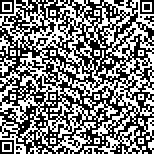| 摘要: |
| 体力活动是当前解释健康问题的重要
机制。近年来,建成环境与休闲性体力活动的
关系引起社会各界的关注。本文选取天津市9个
社区进行实证研究,分别从中观建成环境、微
观视觉感知、个人及社会层面构建研究指标,
并基于多元线性回归模型分析影响居民休闲性
体力活动水平的因子。研究结果表明:与居民休
闲性体力活动水平呈显著相关的建成环境分别
是道路线密度、步行空间连续性、绿视率、监视
度和机动车占比,以及居民个人社会层面的年
龄、性别、月收入、婚姻状况、受教育水平、心理
压力、活动陪同和组织。 |
| 关键词: 休闲性体力活动 中观建成环境 微观
视觉感知 语义分割 |
| DOI:10.13791/j.cnki.hsfwest.20220310 |
| 分类号: |
| 基金项目:国家自然科学基金项目(51778406) |
|
| Study on the Influence of Community Built Environment on Residents’ Leisure-TimePhysical Activity in Tianjin |
|
LI Ze,ZHAO Xiaomin
|
| Abstract: |
| Physical activity is an important mechanism for explaining current health problems.
In recent years, the relationship between health-oriented built environment and recreational
physical activity has attracted much attention. The World Health Organization (WHO)
pointed out that “lack of physical activity” is a key factor leading to chronic diseases such
as cardiovascular disease, cancer and diabetes. In recent years, with the development of the
concept of healthy city, healthy community planning has been paid attention to. How to make
residents get a certain degree of physical exercise through active community environmental
planning is an important task of current community planning. Based on the community space
and taking the improvement of residents’ health as the starting point, this paper discusses which
factors can promote residents’ walking level, medium physical activity level and high physical
activity level through the construction of multi-level indicators such as meso built environment,
micro visual perception and residents’ personal and social information, so as to provide
reference for improving residents’ exercise level and China’s healthy community planning.
The community is the main place for residents’ daily activities. Studying the relationship
between the built environment of the community and the residents’ leisure physical activities is
of great significance to the promotion of residents’ health. This paper selects 9 communities in
Tianjin as the research objects, including Binshuidongli, Binshuixili and Binshuinanli located in
the north residential area of Tiyuanbei, Bihuali, Tianhuali and Anhuali located in the Huayuan
residential area, and Diliutianyuanbei, Bandaohaoting, Bandaolanwan in Meijiang area. This
article constructs indicators from the meso-scale built environment, micro-visual perception,
personal and social level, and explores the relationship with the level of leisure physical
activity of residents. Among them, the meso-scale built environment includes two aspects:
connectivity and convenience, which use field surveys, satellite imagery, high-tech map POI
measurement data, and were calculated based on GIS; micro-visual perception includes two
aspects: comfort and safety, pictures of the community were took to collect data, which were
analyzed by technology High-Resolution Net (HRNet) semantic segmentation model; personal
social data is obtained through field survey questionnaires; physical activity data is obtained
through International Physical Activity Questionnaire (IPAQ) including residents’ weekly
frequency and time of walks, moderate physical activity, and high physical activity. Then the
three types of leisure physical activity intensity were calculated through energy assignment.The independent variables with strong collinearity were eliminated by stepwise regression method, and the retained built environment was used as
the independent variable to conduct multiple linear regression model analysis with leisure physical activity. In the multiple linear regression analysis,
the built environment is taken as the independent variable, the personal social information is taken as the control variable, and the walking intensity,
medium physical activity intensity and high physical activity intensity are taken as the dependent variables. The results show that:
The factors that have a significant positive correlation with residents’ walking level are age, activity companionship, continuity of walking
space, gender, green vision rate. The factors that have a significant negative correlation with residents’ walking level are: the proportion of motor
vehicles, road line density, psychological pressure and monthly income. The factors that have a significant positive correlation with the average
physical activity level of residents are age, activity companionship, and marital status. The factors that have a significant negative correlation with
the average physical activity level of residents are organizational and psychological stress. The built environment has no significant effect on the
level of moderate physical activity. The factors that have a significant positive correlation with residents’ higher physical activity level are education,
monitoring degree, road line density. The factors that have a significant negative correlation with residents' higher physical activity level are
psychological pressure, joining the organization, and the continuity of walking space.
According to the analysis results, the causes of each impact factor are explained and suggestions are given. It can improve the sports policy,
popularize the concept of national fitness and build a good neighborhood to increase the positive impact of individual social level on leisure physical
activities. In terms of built environment, the reasonable density of community road line density and pedestrian space continuity should be further
studied to find a numerical range to promote residents’ physical activity. Attention should be paid to the environmental construction from the
humanistic perspective, such as increasing the three-dimensional greening of the community, the allocation of greening plants, greening forms, and
more management of community parking.
Finally, the paper summarizes the shortcomings of the current research and the direction of further research. In the future, more objective
measurement methods should be used to measure the level of physical activity, such as the combination of accelerometer and GPS to improve the
accuracy of the research. It should strengthen the research on the influence mechanism of each factor, so as to explore how each factor affects the
leisure physical activity of residents through the interaction of society and psychology, so as to provide references for the construction of healthy
communities in China in the future. |
| Key words: Leisure-Time Physical Activity Meso Built Environment Micro Visual Perception Semantic Segmentation |


